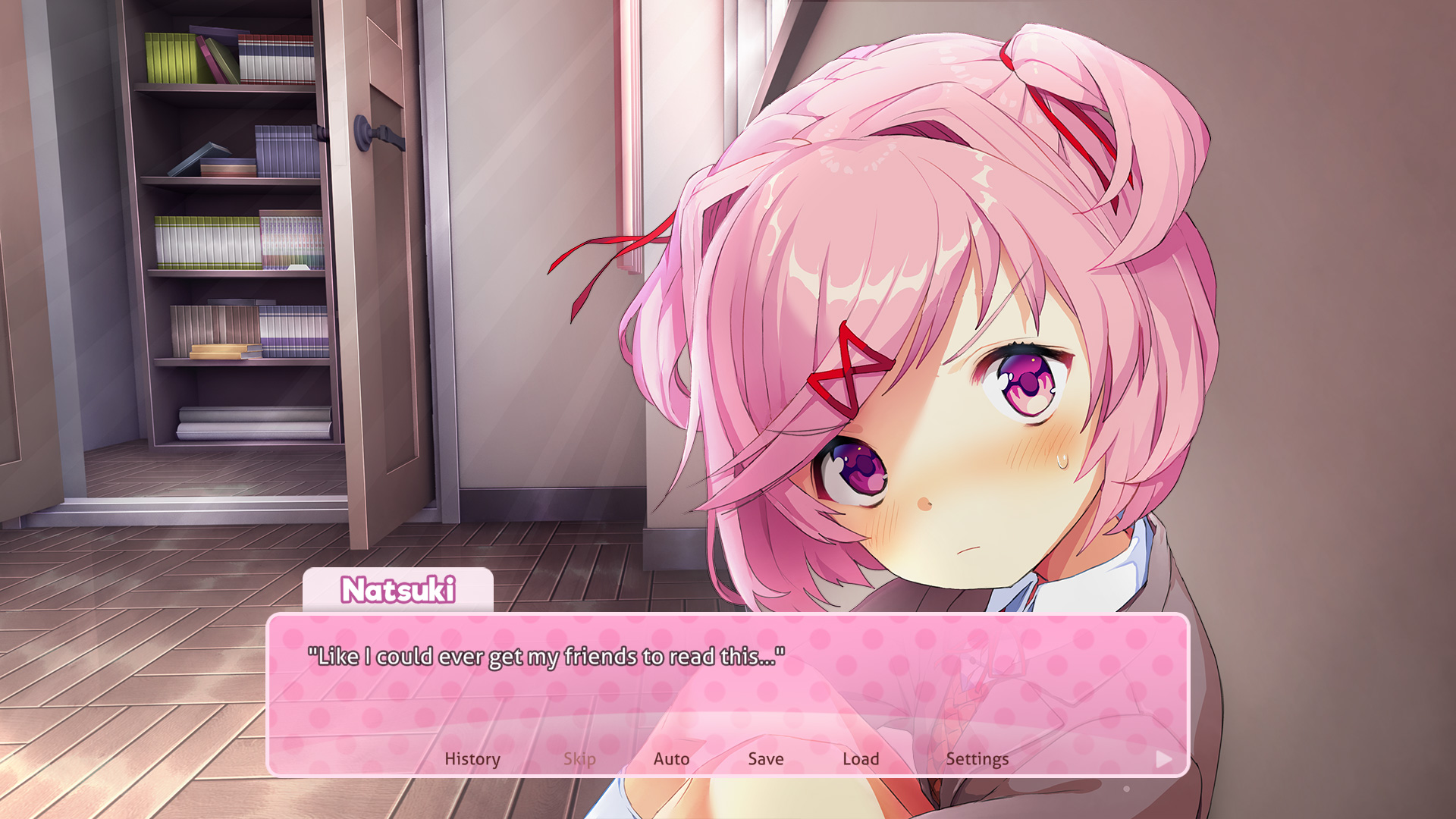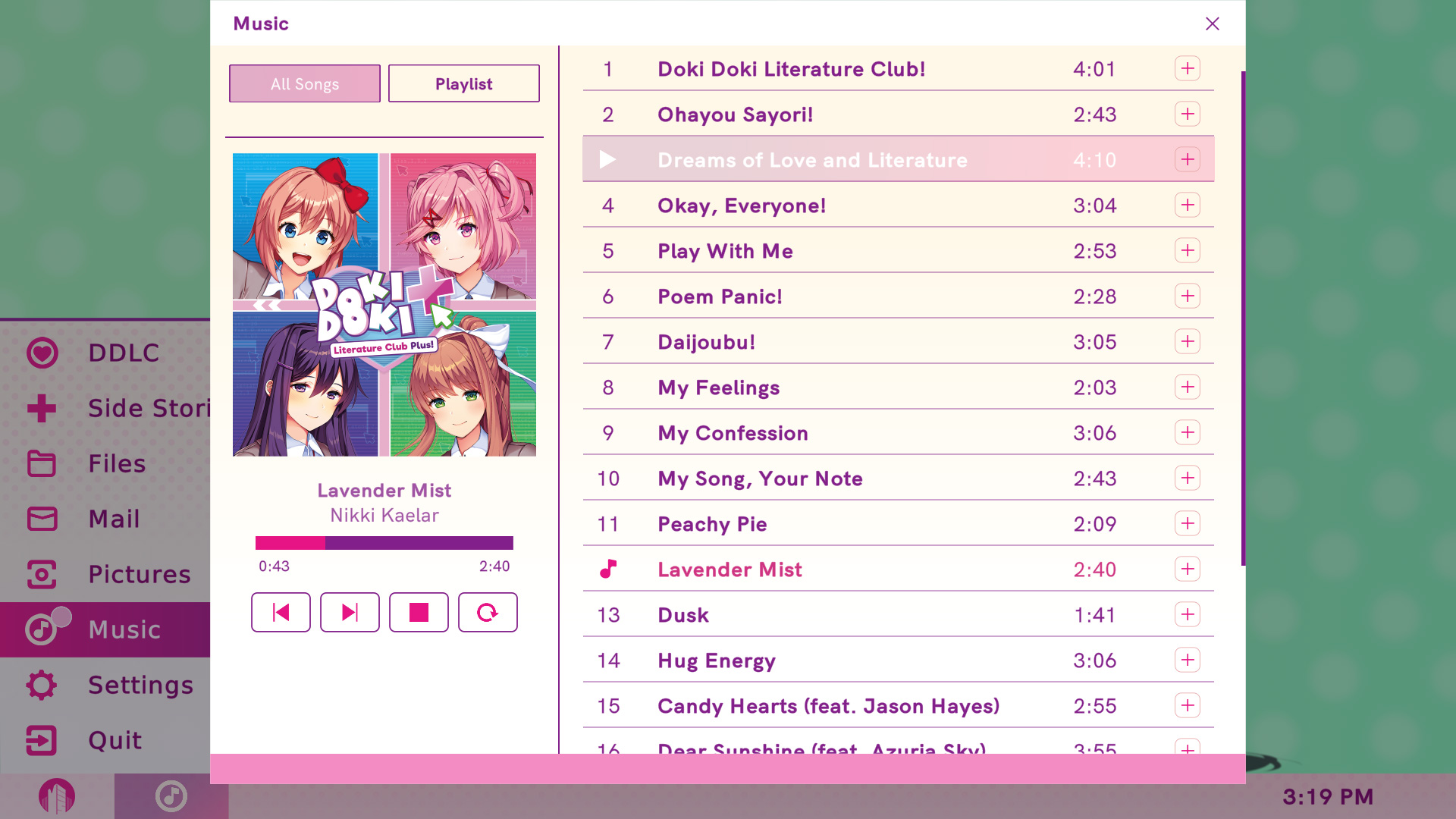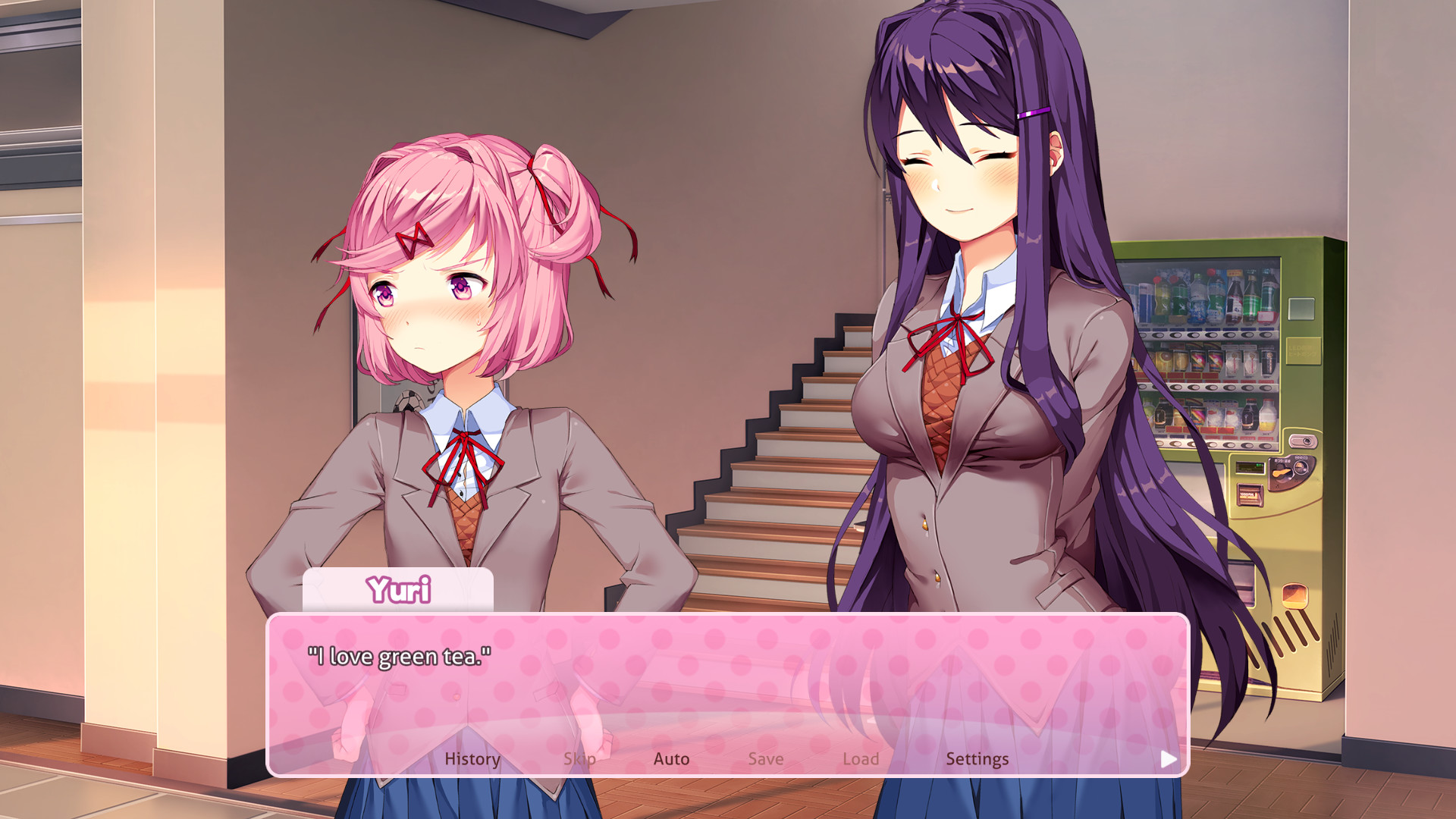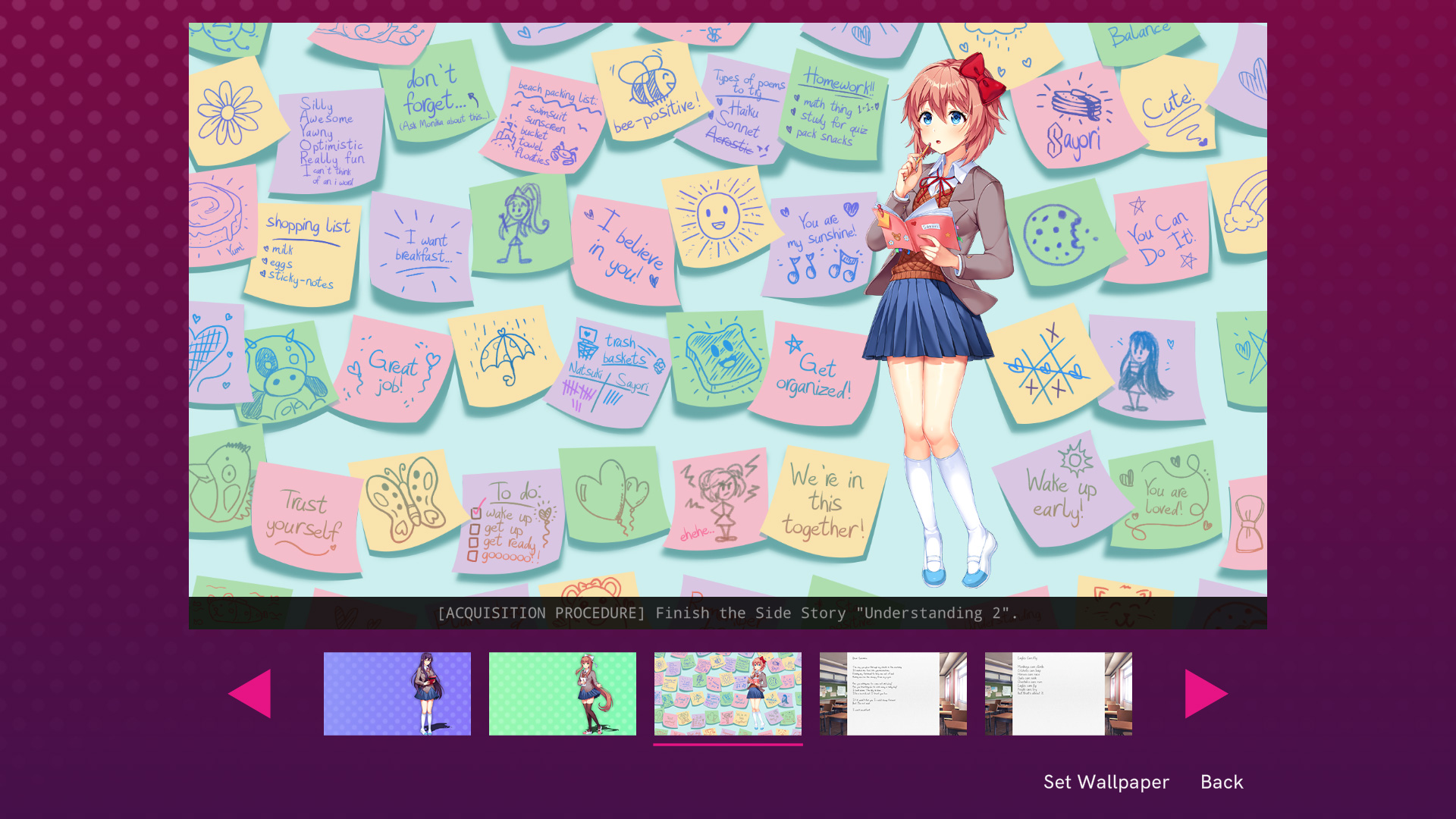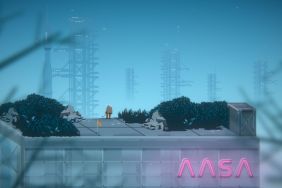Originally released in 2017, I’d heard whispers about Doki Doki Literature Club. About how it wasn’t the game it seemed to be. About how dark it really was; about its unique twist. But being a PlayStation player, this PC visual novel dating sim eluded my gaze for four years, until a chance email came through my inbox with a review code for the console version. Titled Doki Doki Literature Club Plus!, this new version is more than a console port. It’s an expanded version of the original 2017 cult hit.
On the surface, Doki Doki Literature Club Plus! is a dating sim where you the player join a literature club at your school, and must win the affections of four girls through writing your own poetry. Each girl has a certain style that they gravitate towards. Yuri is dark and deep, liking big words and complex allegories. Sayori is all about feelings. And Natsuki likes to keep things simple and cute. You don’t actually write full blown poems as much as selecting words from a random assortment based on who you are trying to write the poem for. Scenes back at the school will change depending on who your poems end up gravitating towards. It will be hours before you start to uncover anything truly weird and horrifying, but rest assured, it’s coming.
What begins as a pretty traditional dating sim visual novel definitely harbors an unexpected secret. If you’re even passively intrigued by visual novels and dating sims, I urge you right now to stop reading and give this a shot, though be warned that it contains some pretty dark imagery and messaging, including themes surrounding hanging, suicide, self-harm, depression, and more (this is not a spoiler. The game warns you of this immediately on starting it up). However, I don’t think the twists are enough to really entice anyone who doesn’t enjoy a whole lot of reading in games or visual novels in general. It’s strangeness and disturbing nature aside, Doki Doki Literature Club Plus! is still a visual novel with heavy amounts of reading required and minimal player interaction or choice in relation. You have to at least have a cursory interest in spending hours reading text and conversations between girls in a classroom to get enjoyment from the ultimate and rather disturbing payoff.
That said, to begin truly talking about Doki Doki Literature Club Plus! for all that it is, I do need to at least allude to some rather spoilery content, so if you’d rather go into it knowing nothing at all, stop here.
Some Spoilers For Doki Doki Literature Club’s Twists Follow
The key to Doki Doki Literature Club’s horrifying twist is in its metanarrative, which makes the fact that Doki Doki Literature Club is a game actually play into part of the game. With the original PC version, this meant actually accessing, modifying, and deleting game files on your computer in order to affect certain things within the game. Obviously, this isn’t possible on console, so Doki Doki Literature Club Plus! gives the game a virtual desktop in which to handle these same things.
However, this virtual desktop now fundamentally changes that metanarrative aspect by containing the metacontent within something that is clearly still just the game itself. Rather than actually doing things via the files in your computer, you are still ultimately just “playing a game,” even when engaging within these metanarrative moments.
While it still maintains a pretty spooky impact via its meta twist, it definitely feels more structured as a game experience, and less of a “ghost in the machine” than the original game intended. It would have been cool to see this virtual desktop attempt to recreate the PS5 UI in order to deepen that immersion, but that would have required a custom virtual desktop for every platform. This is similar to Telling Lies taking place in front of a computer screen and feeling a little bit odd and out of place on console. The intended immersive effect isn’t entirely ruined, but is certainly diminished.
The key to a meta narrative is breaking the fourth wall and making the player feel intrinsically connected to the experience, like it’s actually happening to them. This isn’t new in video games. Hideo Kojima did it with Metal Gear Solid, including making you read the CD case for Meryl’s Codec number and Psycho Mantis reading your controller ports and memory cards. Doki Doki Literature Club Plus! still has a pretty dramatic fourth-wall break as it begins to acknowledge the player directly, but the new virtual desktop makes the player another step removed from that meta-digital space, a necessary compromise in order to bring the game to consoles. Still, there are plenty of disturbing occurrences and psychological aspects that made me utter “what the fuck….” more than once.
Doki Doki Literature Club Plus Review – Side Stories, Backstories
This new Plus version of the game brings with it additional Side Stories, accessible from the virtual desktop and unlocked by viewing different interactions with the girls. These Side Stories are all strictly visual novels, with no choices, paths, or deviations. In fact, they don’t even involve you the player or the game’s ultimate metanarrative twist. They are entirely backstories that allow you to get to know Sayori, Monika, Yuri, and Natsuki a little bit better. There are six in total, each split into two parts, which explore the relationships between each girl in the months before you the player join the literature club. A final epilogue side story completes the package.
For players engaged with Doki Doki Literature Club for its meta twist and the darker aspects of the game, the added Plus content—mostly in the form of these Side Stories, though there are a few other unlockable images, secrets, and Easter eggs—doesn’t delve down these paths. The Side Stories aren’t dark, except to say that they can explore some pretty deep emotional topics as these four girls meet each other and interact. The Side Stories are not meta or fourth-wall breaking.
However, what the Side Stories are is deep new lore for fans of the game and its characters, for people who have wanted more of Sayori, Monika, Yuri, and Natsuki. They may not be gimmicks, but they exist because of a dedicated fanbase who want to see more dimension added to Sayori’s desire to make everyone happy or Monika’s feelings of inadequacy as a leader. They explore the rift between Natsuki’s love for the cute and simple and Yuri’s more introspective nature. They set up the dynamics of this literature club beyond two-dimensional characters that the player is trying to woo. And yes, some of these deeper insights end up making the main game’s twists quite a bit more heartbreaking.
Doki Doki Literature Club works best if you go into it knowing nothing about it. It’s still a visual novel dating sim, and the Plus! version really doubles down on the visual novel aspect, but it breaks the status quo and does the unexpected, making a deeply disturbing psychological horror game out of something that looks cute and adorable on the surface. The console version diminishes some of what made the PC version’s twist work so well, a necessary sacrifice to get the game to a wider audience. And if you are just looking to return to this world and these characters, Doki Doki Literature Club Plus! feels like the version that was made for the fans.
Doki Doki Literature Club Plus review code provided by publisher. Reviewed on PS5. For more information, please read our Review Policy.
-
A dating sim visual novel hiding a dark and disturbing secret
-
Psychological horror that breaks the status quo
-
Feels like a version built for the fans
-
Side Stories don't have any interactive elements
-
Transition to console diminishes the effect of some of the twists

